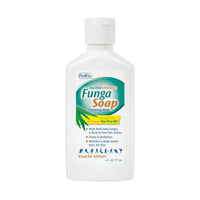Description
Each of us has a set point for our metabolism. This set point is somewhat like the thermostat in our homes. Some folks have a higher set point than others. For those with a high set point, hyperhidrosis of the palms and the soles of the feet is common.
Perspiration is helpful in a number of ways. Perspiration acts to cool the body and eliminate waste, but excessive perspiration can be an embarrassment due to clammy hands or foot odor. Excessive perspiration can also contribute to cold feet in the winter.
It's interesting to note that those patients who have an interest in alternative health care may be reluctant to treat hyperhydrosis. Their philosophy is that perspiration is a natural way that the body rids itself of toxic material. In this line of thinking, inhibiting perspiration by any means will result in the accumulation of free radicals and other metabolic waste. Generalized hyperhydrosis, though, can result in social embarrassment due to damp hands, ruined clothes, and chronic foot odor. Therefore, treatment of hyperhydrosis is important in many social settings such as an office or other indoor settings.
Causes and contributing factors
Contributing factors to hyperhydrosis include anxiety, stress, hyperthyroidism, hypoadrenalism or excessive fluid intake.
Differential diagnosis
Athlete's foot
Immersion foot
Trench foot
Treatment
Hyperhydrosis is often a chronic condition. Treatment requires ongoing, daily care. Some of the methods used to treat hyperhydrosis of the foot are really quite simple and focus on creating an environment in the shoe that is cool, dry, and accessible to UV light. As an example, try these four simple tricks to keep the foot dry:
1. Rotate your shoes, wearing each pair every other day to allow them to dry thoroughly.
2. Avoid synthetic materials like rubber or vinyl and wear leather or cloth that can absorb moisture. Open sandals are a great alternative.
3. Frequent changes of socks to wick away moisture.
4. Use talc or baby powder daily to wick away moisture.
Topical drying agents are useful to help control hyperhydrosis. Aluminum chloride is the most commonly used topical drying agent. Aluminum chloride is found in many underarm antiperspirants and in several prescription strength medications used to treat hyperhydrosis. Formalin is used in other prescription strength medications to control perspiration. Antihistamine and anticholinergic medications are used in severe cases. These medications include Benadryl, Banthine or Pro-Banthine.
Shoe odor, called bromhydrosis, can be reduced with the use of a drying agent. Bromhydrosis is due to bacterial overgrowth in the shoe that is promoted by hyperhydrosis. Control of bacterial growth in the shoe can be helped with the use of a shoe disinfectant. And remember, to prevent foot odor, it's imperative to keep the shoe as dry as possible.
Severe cases of hyperhydrosis can also be treated with injections or surgery. Injections of Botox have been used very successfully by dermatologists and podiatrists to temporarily control hyperhydrosis. Botox is used to paralyze the smooth muscle that regulates the sweat gland. Endoscopic excision of the dorsal root ganglion is a method used by neurosurgeons to create surgical anhydrosis by surgically removing that component of the nervous system responsible for autonomic functions.
When to contact your doctor
Hyperhydrosis can usually be treated with home care. Consult your podiatrist for addition information or treatment suggestions.
References
References are pending.
Author(s) and date
 This article was written by Myfootshop.com medical advisor Jeffrey A. Oster, DPM.
This article was written by Myfootshop.com medical advisor Jeffrey A. Oster, DPM.
Competing Interests - None
Cite this article as: Oster, Jeffrey. Hyperhydrosis /blogs/articles/hyperhydrosis
Most recent article update: December 10, 2020.
 Hyperhydrosis by Myfootshop.com is licensed under a Creative Commons Attribution-NonCommercial 3.0 Unported License.
Hyperhydrosis by Myfootshop.com is licensed under a Creative Commons Attribution-NonCommercial 3.0 Unported License.




